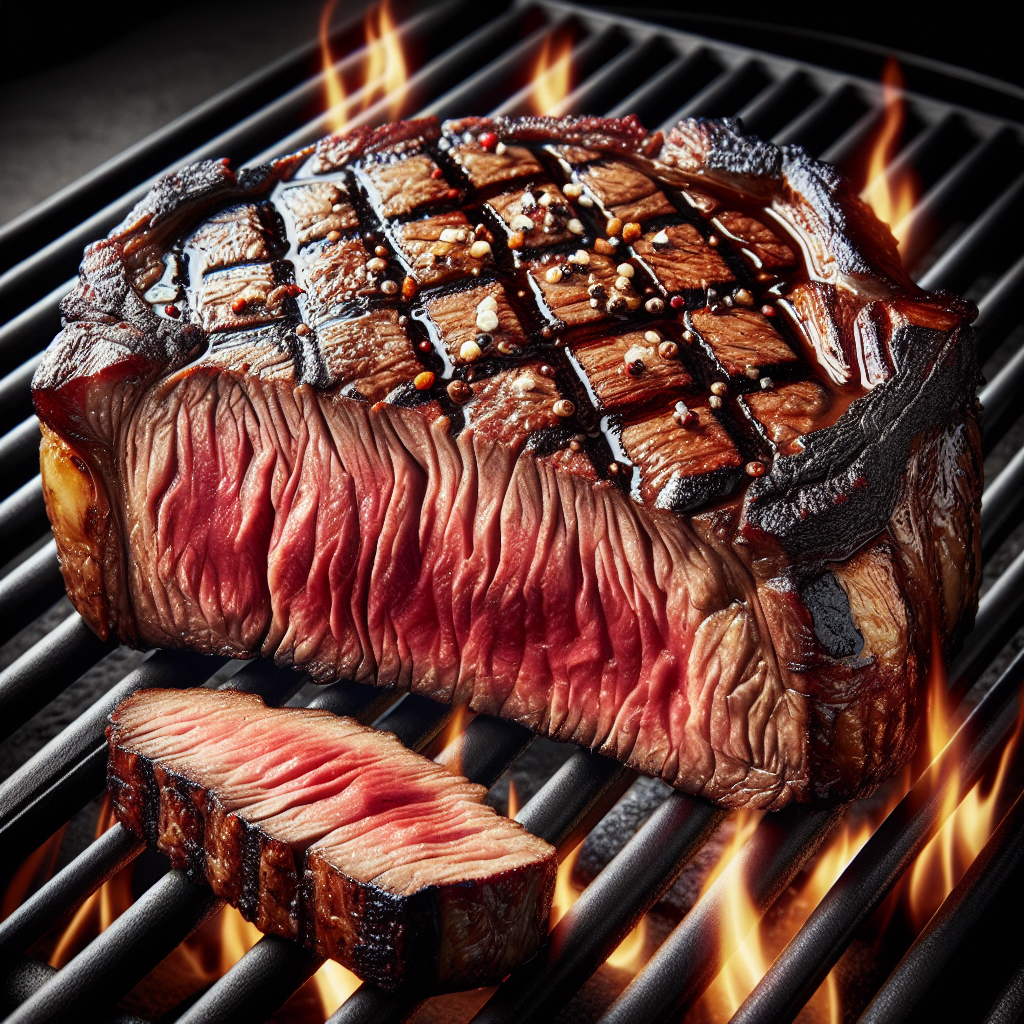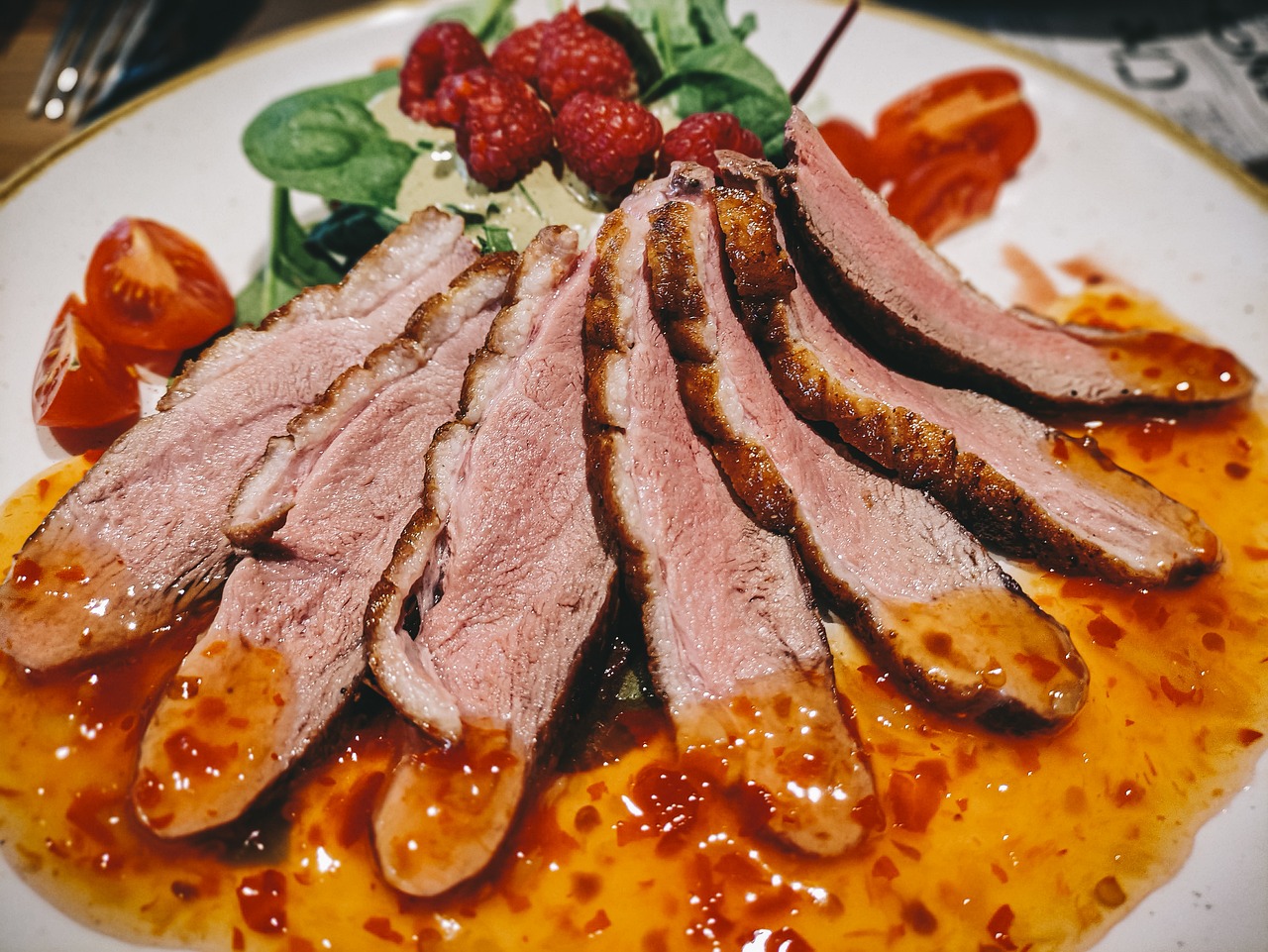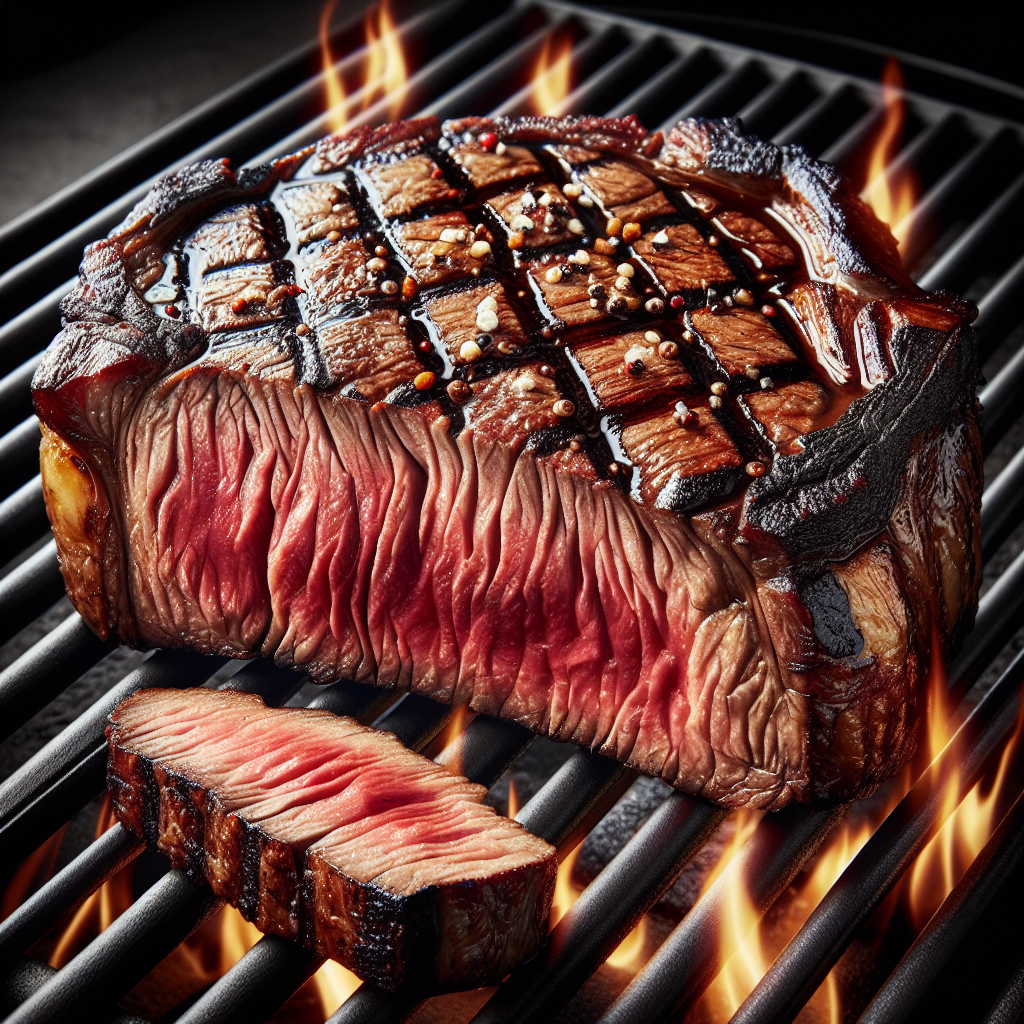
Imagine you have just bought a thick, juicy cut of meat and you’re ready to cook it using the sous vide method. But wait, how do you determine the perfect cooking time? Fret not, my friend! In this article, we will unveil the secrets to calculating the cooking time for thick cuts of meat using the sous vide technique. With our handy tips and tricks, you’ll never have to worry about overcooking or undercooking your meat again. So grab a pen and get ready to become a sous vide master chef!

Factors to Consider
When cooking thick cuts of meat sous vide, there are several important factors to consider that will impact the overall cooking time and the doneness of your meat. These factors include the thickness of the meat, the desired doneness, and the initial temperature of the meat.
Thickness of the Meat
The thickness of the meat is a crucial factor to consider when determining the cooking time for sous vide. Thicker cuts of meat will require more time to cook evenly and reach the desired internal temperature. It is important to take the thickness of the meat into account and adjust the cooking time accordingly.
Desired Doneness
Another factor to consider is the desired doneness of the meat. Everyone has their own preferences when it comes to how they like their meat cooked, whether it’s rare, medium-rare, medium, or well-done. The desired doneness will have an impact on the cooking time and temperature needed to achieve that perfect result.
Initial Temperature of the Meat
The initial temperature of the meat also plays a role in calculating the cooking time. If the meat is cold or not at room temperature, it will take longer to cook. It’s important to let the meat come to room temperature before cooking to ensure even cooking and reduce the overall cooking time.
Experimentation and Experience
When cooking thick cuts of meat sous vide, it’s important to remember that it may take some trial and error to find the perfect cooking time and doneness that suits your preferences. Experimentation and experience are key in developing your own cooking methods and techniques.
Trial and Error Method
One way to determine the ideal cooking time is through the trial and error method. Start by cooking the meat for a certain period of time, then check the internal temperature and doneness. If it’s not cooked to your liking, adjust the cooking time accordingly and repeat until you achieve the desired result. Over time, you’ll gain more experience and have a better understanding of the cooking time needed for different types of meat.
Recording Cooking Times
To keep track of your experiments and progress, it’s helpful to record your cooking times and the results. Keep a cooking journal or spreadsheet where you can note down the thickness of the meat, the initial temperature, the cooking time, and the final doneness. This will allow you to refer back to your previous experiments and make adjustments based on your findings.
Recommended Cooking Times by Thickness
To provide a starting point for your sous vide cooking journey, here are some recommended cooking times based on the thickness of the meat:
1 inch to 1.5 inches
For meat that is 1 inch to 1.5 inches thick, a general guideline is to cook it sous vide for 1 to 2 hours. This will give you a medium-rare doneness. Adjust the cooking time if you prefer a different level of doneness.
1.5 inches to 2 inches
For thicker cuts, such as those ranging from 1.5 inches to 2 inches, increase the cooking time to around 2 to 3 hours. This will ensure that the center of the meat reaches the desired doneness while maintaining a beautiful sear on the outside.
2 inches to 3 inches
Thicker cuts, between 2 inches and 3 inches, will require a longer cooking time. Aim for around 3 to 4 hours to achieve the desired doneness. Remember to adjust the cooking time based on your personal preferences and the specific cut of meat.
Over 3 inches
For cuts that are over 3 inches thick, the cooking time will significantly increase. It is recommended to cook these thick cuts of meat for 4 to 6 hours or even longer. This extended cooking time will ensure that the meat is cooked evenly throughout and reaches the desired level of doneness.
Adjusting Cooking Times
While the recommended cooking times serve as a helpful starting point, it’s important to remember that cooking sous vide is a versatile method that can be adjusted to suit your specific preferences. Here are a few ways to adjust the cooking times to achieve your desired results:
Using a Conversion Chart
When adjusting cooking times, you can refer to a conversion chart to help determine the appropriate adjustments based on the thickness of the meat. These charts provide a baseline cooking time, and you can then make adjustments based on your desired level of doneness.
Observing Changes in Texture
Another way to gauge whether the meat is cooked to your liking is by observing changes in texture. As the meat cooks, the texture will gradually change, becoming more tender and juicy. Take note of the texture and make adjustments to the cooking time accordingly.
Taking Note of Personal Preferences
Everyone has their own unique preferences when it comes to the doneness of meat. Some prefer a rarer and juicier steak, while others prefer a more well-done and firm texture. By taking note of your personal preferences, you can fine-tune the cooking time to achieve the perfect result every time.

Impact of Desired Doneness
The desired doneness of the meat has a significant impact on the cooking time required. Different levels of doneness will require different cooking temperatures and times to achieve the desired result.
Rarity Preferences
If you prefer a rare or medium-rare steak, the cooking time will be shorter compared to someone who prefers a well-done steak. The longer the meat is cooked, the more it will lose its natural juices and tenderness. It’s important to consider your desired level of doneness when calculating the cooking time.
Temperature Adjustment
The desired doneness also affects the cooking temperature. For a rare steak, the internal temperature should be lower compared to a well-done steak. Adjusting the cooking temperature in combination with the cooking time will help you achieve the perfect doneness.
Effects on Cooking Time
The cooking time will vary depending on the desired doneness. A rare steak will require a shorter cooking time, while a well-done steak will require a longer cooking time. It’s essential to consider the desired doneness when calculating the overall cooking time to ensure that the meat is cooked to your preferences.
Monitoring Temperature
To achieve precise and consistent results when cooking thick cuts of meat sous vide, it is crucial to monitor the temperature throughout the cooking process. Temperature plays a vital role in determining the doneness of the meat and can greatly impact the overall outcome.
Importance of Accuracy
When cooking sous vide, accuracy in temperature is key. Even slight deviations can affect the final result of the meat. Investing in a reliable and accurate precision thermometer is highly recommended to ensure that the meat is cooked to perfection.
Using Precision Instruments
To monitor the temperature accurately, it is recommended to use precision instruments such as an immersion circulator or a sous vide machine. These devices help maintain a constant temperature while circulating the water to evenly cook the meat.
Regular Checks during Cooking
During the cooking process, it’s important to regularly check the internal temperature of the meat to ensure that it is progressing towards the desired doneness. Use a high-quality meat thermometer to check the temperature at different points to ensure even cooking.

Pre-searing and Post-searing
Searing is an important step that adds flavor and creates a beautiful crust on the exterior of the meat. Depending on your preference, you can choose to pre-sear or post-sear your meat before or after the sous vide cooking process.
Searing Before Sous Vide
Pre-searing the meat before cooking sous vide can help develop a flavorful crust and enhance the overall taste. By searing the meat first, you can also achieve a more visually appealing final result. However, it’s important to note that pre-searing may result in a shorter overall cooking time as the meat will already have achieved some degree of doneness.
Searing After Sous Vide
On the other hand, post-searing involves searing the meat after it has been cooked sous vide. This method allows the meat to reach the desired internal temperature evenly throughout and then finishes it off with a final sear to create a crispy and flavorful exterior. Post-searing is a popular choice for those who prefer a more precise control over the cooking process.
Resting Time
Resting the meat after cooking is an essential step to allow the juices to redistribute evenly, resulting in a more flavorful and tender final result. The resting time will depend on the thickness of the meat.
Reasons for Resting
Resting the meat after cooking allows the proteins to relax and the juices to be reabsorbed into the meat. This resting period helps lock in the flavors and ensures that the meat remains tender and succulent when it is time to serve.
Recommended Resting Times
As a general guideline, it is recommended to let the meat rest for about 5 to 10 minutes before slicing and serving. However, for larger and thicker cuts, you may want to let the meat rest for up to 20 minutes to allow for optimal juiciness and tenderness.
Thick Cut Meat Explained
Before diving into the details of sous vide cooking, it’s important to understand what is considered a thick cut of meat and the different types of cuts available.
Definition of Thick Cut
A thick cut of meat typically refers to a piece of meat that is larger in size and has a greater thickness compared to standard cuts. Thick cuts are often preferred for their tenderness and are commonly used for special occasions or when a more substantial meal is desired.
Types of Cuts
Thick cuts can come in various forms depending on the type of meat. This can include steaks, roasts, chops, or even whole cuts such as a beef tenderloin or a pork loin. Each type of cut may require slightly different cooking times and techniques, so it’s important to familiarize yourself with the specific cut you are working with.
Popular Thick Cuts
Some popular thick cuts of meat include ribeye steaks, New York strip steaks, pork chops, lamb racks, and beef roasts. These cuts offer a rich and robust flavor that is enhanced through the sous vide cooking method. Experiment with different cuts to discover your personal favorites.
Factors Affecting Cooking Time
When cooking thick cuts of meat sous vide, several factors can affect the overall cooking time. Understanding these factors will help you make more informed decisions and achieve the perfect result every time.
Bone-in vs. Boneless
The presence of bones in the meat can significantly impact the cooking time. Bone-in cuts generally require longer cooking times as the bones act as insulators, slowing down the cooking process. Boneless cuts, on the other hand, will cook more quickly and evenly.
Density and Composition of the Meat
The density and composition of the meat will also affect the cooking time. Meats with a higher fat content may take longer to cook as the fat needs time to render and break down. Additionally, denser meats may require longer cooking times to ensure even doneness throughout the entire cut.
In conclusion, when cooking thick cuts of meat sous vide, it’s important to consider factors such as the thickness of the meat, the desired doneness, and the initial temperature. Through experimentation and experience, you can fine-tune the cooking times and adjust them based on personal preferences. Monitoring the temperature accurately and considering pre-searing or post-searing techniques will further enhance the flavor and texture of the meat. Remember to let the meat rest before serving, and enjoy the tender and delicious results of your sous vide cooking adventure.



